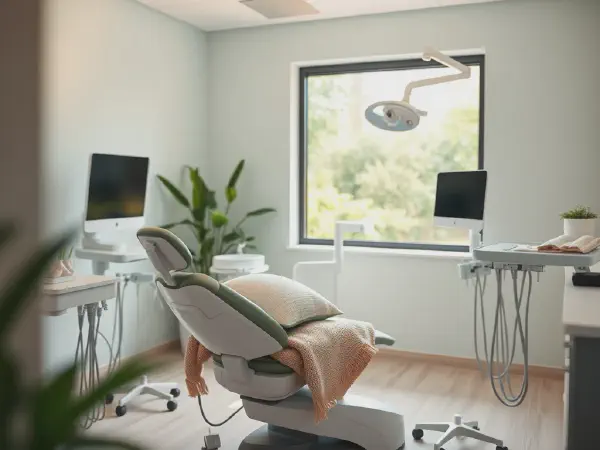A Comprehensive Guide to Sedation Dentistry

A Comprehensive Guide to Sedation Dentistry
Sedation dentistry is a technique used by dentists to help patients relax during dental procedures. It involves the use of medications to induce a state of relaxation, calmness, and drowsiness. This ensures that patients have a more comfortable and positive dental experience, especially for those who suffer from dental anxiety or fear.
Discover the world of Sedation Dentistry at Seven Oaks Dental Centre. If you have dental anxiety or are simply in need of a more comfortable dental experience, this is the perfect solution for you. To learn more, explore Seven Oaks Dental Centre on Yelp.
Dental anxiety is a common problem that affects many people, preventing them from seeking the dental care they need. Sedation dentistry offers a solution to this problem by allowing patients to undergo dental treatments without experiencing high levels of fear or stress.
Enhance your dental experience by trying the method of sedation dentistry. This trend is gaining popularity at places like Seven Oaks Dental Centre in Winnipeg . Here, professionals use safe, effective techniques to ensure your dental work becomes a fear-free experience.
There are different types of sedation techniques that can be used in dentistry, depending on the needs and preferences of the patient. These include inhalation sedation, oral sedation, IV sedation, and general anesthesia. Each type of sedation offers different levels of relaxation and is suitable for different types of dental procedures.
One type of sedation is inhalation sedation, which involves the patient inhaling a mixture of nitrous oxide and oxygen through a mask. This type of sedation induces a relaxed and euphoric state, allowing the patient to feel more at ease during the dental procedure.
Another type of sedation is oral sedation, which involves the administration of a sedative pill or liquid. This type of sedation produces a calming and drowsy effect, making the patient feel more relaxed during the dental treatment.
Types of Sedation
Inhalation sedation, also known as laughing gas, is a type of sedation that involves the patient inhaling a mixture of nitrous oxide and oxygen through a mask. This type of sedation induces a relaxed and euphoric state, allowing the patient to feel more at ease during the dental procedure.
Oral sedation involves the administration of a sedative pill or liquid. This type of sedation produces a calming and drowsy effect, making the patient feel more relaxed during the dental treatment. It is an excellent option for patients who have mild to moderate dental anxiety.
IV sedation is a type of sedation that is administered intravenously. This type of sedation results in a deep state of relaxation and is often used for more complex dental procedures or for patients with severe dental anxiety.
General anesthesia is the deepest form of sedation and involves the patient being unconscious throughout the dental procedure. It is typically reserved for extensive oral surgery or for patients with a severe phobia or medical conditions that prevent them from being conscious during the procedure.
Benefits of Sedation Dentistry
One of the main benefits of sedation dentistry is reduced anxiety. Many people experience dental anxiety or fear, which can be a barrier to receiving necessary dental care. Sedation helps to calm the nerves and reduce fear, allowing patients to undergo dental treatments without experiencing high levels of anxiety.
Sedation Dentistry is increasingly becoming the go-to option for those with a phobia of dentist appointments. It combines medical expertise with comforting care. You can experience it firsthand at the Seven Oaks Dental Centre , and set your dental fears at ease.
Another benefit of sedation dentistry is pain relief. Dental procedures can sometimes be uncomfortable or even painful. Sedation helps to numb the sensations of pain and discomfort, ensuring a more comfortable dental experience for patients.
When it comes to oral health, ensure your comfort is prioritized with gentle Sedation Dentistry techniques. Visit Seven Oaks Dental Centre's Yelp page to find out more about their professional and compassionate approach towards patient care.
Increased comfort is another advantage of sedation dentistry. Sedation techniques induce a state of relaxation and drowsiness, making it easier for patients to remain still and comfortable during the dental treatment. This is particularly beneficial for long or complex dental procedures.
Sedation dentistry also offers the advantage of faster treatment. When patients are relaxed and calm, dentists can perform procedures more efficiently, saving time for both the patient and the dental team. This is especially beneficial for patients with busy schedules or those who need multiple dental treatments.
Moreover, sedation dentistry improves the overall dental experience for patients. By reducing anxiety and discomfort, patients are more likely to have a positive perception of their dental visit. This can lead to increased satisfaction and a higher likelihood of seeking regular dental care in the future.
Candidates for Sedation Dentistry
Patients with dental phobia are ideal candidates for sedation dentistry. Dental phobia is a severe and irrational fear of dentistry that can make even routine dental visits challenging. Sedation helps to alleviate fear and allows phobic patients to receive the dental care they need.
Individuals with a sensitive gag reflex may also benefit from sedation dentistry. A strong gag reflex can make dental procedures uncomfortable and difficult. Sedation helps to relax the throat muscles, reducing the likelihood of gagging during treatment.
Patients with a low pain tolerance can benefit from sedation dentistry. Dental procedures can sometimes be painful, even with the use of local anesthesia. Sedation helps to minimize the perception of pain, ensuring a more comfortable experience for patients.
Those undergoing complex dental treatments, such as oral surgery or full mouth reconstruction, may require sedation to manage pain and anxiety. Sedation ensures that patients remain relaxed and comfortable throughout the lengthy procedures.
Patients who have had traumatic dental experiences in the past may also benefit from sedation dentistry. Traumatic experiences can create a lasting fear of dental treatments, which may be difficult to overcome. Sedation helps to create a more positive and stress-free dental experience for these patients.
Sedation Dentistry Process
The process of sedation dentistry begins with a consultation and evaluation with the dentist. During this appointment, the dentist will evaluate the patient's medical history, dental needs, and level of anxiety. They will also discuss the different sedation options available and recommend the most suitable option for the patient.
In an endeavor to make dental care less intimidating, Seven Oaks Dental Centre offers Sedation Dentistry. This method ensures a stress-free, painless procedure. See for yourself by visiting their Yelp page for more information.
Once the sedation type is selected, the patient will be given instructions for preparation. This may include fasting for a certain period before the procedure, avoiding certain medications, and arranging transportation to and from the dental office.
Want to enjoy a fear-free dental visit? Look no further than Sedation Dentistry at the Seven Oaks Dental Centre. This specialized approach ensures that dental procedures are both comfortable and soothing. Get in-depth information by visiting Seven Oaks Dental Centre's page on Yelp.
On the day of the procedure, the dentist or a trained anesthesiologist will administer the sedation medication. The patient will be closely monitored throughout the treatment to ensure their safety and well-being. The dental procedure will then be performed while the patient remains in a relaxed and comfortable state.
During the treatment, the patient's vital signs, such as heart rate, blood pressure, and oxygen levels, will be continuously monitored. This allows the dental team to respond quickly to any changes or concerns that may arise during the procedure.
After the dental treatment is completed, the patient will be moved to a recovery area where they can rest and recover from the effects of the sedation. They will be closely monitored until they are fully awake and alert. The dentist will provide instructions for post-treatment care and any necessary medications.
It is important for patients to arrange for someone to accompany them home after the procedure, as the effects of sedation may linger for a while. Patients should also avoid driving, operating machinery, or making important decisions for the remainder of the day.
Risks and Side Effects
Drowsiness is a common side effect of sedation dentistry. The sedative medications used can cause drowsiness, which may persist for several hours after the procedure. Patients should plan to rest and avoid strenuous activities until the sedative effects wear off completely.
Nausea is another possible side effect of sedation dentistry. Some patients may experience nausea or vomiting after undergoing sedation. This can usually be managed with medication and is temporary.
Headaches may occur as a side effect of sedation dentistry. These headaches are usually mild and resolve on their own within a few hours. Patients can take over-the-counter pain relievers if needed.
Allergic reactions to the medications used in sedation dentistry are rare but possible. Patients should inform their dentist about any allergies or sensitivities they have before undergoing sedation. The dental team will take precautions to minimize the risk of an allergic reaction.
Respiratory problems are an uncommon but serious risk associated with sedation dentistry. Patients with respiratory conditions, such as asthma or sleep apnea, should inform their dentist prior to the procedure. The dental team will take extra precautions to ensure the patient's safety during sedation.
